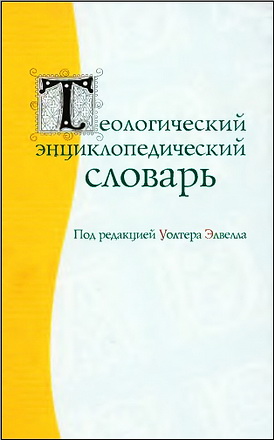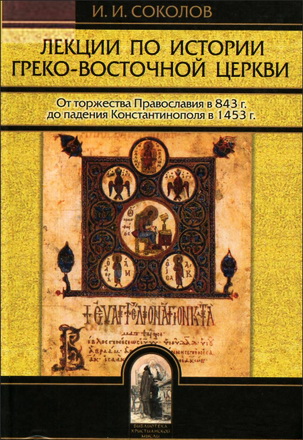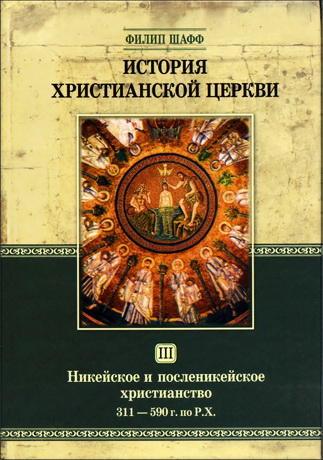
Oxford Handbook of the Psalms - Brown - The Psalms

Ever since the publication of the first translations and editions of Akkadian prayer texts at the end of the nineteenth century, parallels between Mesopotamian prayers1 and the biblical psalms have been explored in various ways. Moreover, because the deciphering of these prayer texts coincided with the development of the form-critical method in biblical studies, these prayers provide prime test cases for comparative genre research of the Psalms.
Several basic issues have been raised by this comparative work of the last century. Given the similar poetic structures of these texts, the possibility of direct dependence of the biblical texts on the Mesopotamian texts was much discussed (e.g., Stummer 1922; Widengren 1937). But because direct influence cannot be proven, it is best to speak of parallels rather than dependencies. Form-critical studies have focused on the structure of prayers as whole texts to establish and compare genres of prayer (e.g., Stummer 1922; Begrich 1928; Westermann 1954). Mesopotamian prayers are often transmitted as part of a ritual consisting of agenda and the prayer as dicenda. Based on these ritual settings, hypotheses have been developed concerning the primary Sitz im Leben of the biblical psalms, whose collection in the book of Psalms under various superscriptions is most probably secondary (Gerstenberger 1980; Achenbach 2004; Zernecke 2011a).
William P. Brown - The Psalms
Oxford University Press 2014 - 686
ISBN 978–0–19–978333–5
William P. Brown - The Psalms - Contents
Preface
List of Contributors
Abbreviations
- 1. The Psalms: An Overview. William P. Brown
PART I. ANCIENT NEAR EASTERN BACKGROUNDS
- 2. Mesopotamian Parallels to the Psalms. Anna Elise Zernecke
- 3. Canaanite Backgrounds to the Psalms. Mark S. Smith
- 4. Egyptian Backgrounds to the Psalms. Bernd U. Schipper
PART II. LANGUAGE OF THE PSALMS
- 5. Poetry of the Psalms. F. W. Dobbs-Allsopp
- 6. The Psalms in Poetry. Peter S. Hawkins
- 7. Language of Lament in the Psalms. Carleen Mandolfo
- 8. Praise and Metonymy in the Psalms. Travis J. Bott
- 9. Wisdom Language in the Psalms. Diane Jacobsonvi
PART III. TRANSLATING PSALMS
- 10. The Aramaic Psalter. David M. Stec
- 11. The Septuagint Psalter. Joachim Schaper
- 12. Jerome’s Psalters. Scott Goins
PART IV. COMPOSITION OF THE PSALMS
- 13. The Levites and the Editorial Composition of the Psalms. Susan E. Gillingham
- 14. On the Ordering of Psalms as Demonstrated by Psalms 136–150. Yair Zakovitch
- 15. Unrolling the Dead Sea Psalms Scrolls. Peter W. Flint
PART V. HISTORY OF INTERPRETATION AND RECEPTION: A SAMPLING
- 16. Some Aspects of Traditional Jewish Psalms Interpretation. Alan Cooper
- 17. Psalms in the New Testament. Stephen P. Ahearne-Kroll
- 18. The Psalms in the Qur’an and in the Islamic Religious Imagination. Walid A. Saleh
- 19. Reception of the Psalms: The Example of Psalm 91. Brennan Breed
PART VI. INTERPRETIVE APPROACHES
- 20. Psalms and the Question of Genre. William H. Bellinger, Jr.
- 21. Psalms of the Temple. Richard J. Clifford
- 22. Non-Temple Psalms: The Cultic Setting Revisited. Erhard S. Gerstenberger
- 23. The Shape and Shaping of the Psalter: Psalms in Their Literary Context. J. Clinton McCann, Jr.
- 24. The Meta-Narrative of the Psalter. Nancy L. deClaissé-Walford
- 25. Ancient Near Eastern Iconography and the Psalms. Joel M. LeMon
- 26. Rhetoric of the Psalms. Robert L. Foster
- 27. Poetic Attachment: Psychology, Psycholinguistics, and the Psalms. Brent A. Strawn
- 28. Feminist Interpretation of the Psalms. Melody D. Knowles
- 29. Kingship in the Book of Psalms. Norman K. Gottwald
PART VII. CULTURALLY BASEDINTERPRETATIONS
- 30. Singing a Subversive Song: Psalm 137 and “Colored Pompey”. Rodney S. Sadler, Jr.
- 31. Rising from Generation to Generation: Lament, Hope, Consciousness, Home, and Dream. John J. Ahn
- 32. Psalms in Latin America. Edesio Sanchezviii
PART VIII. THEOLOGIES OF THE PSALMS
- 33. Jewish Theology of the Psalms. Marc Zvi Brettler
- 34. Christian Theology of the Psalms. Rolf A. Jacobson
PART IX. ANTHROPOLOGIES OF THE PSALMS
- 35. On “Being Human” in the Psalms. Walter Brueggemann
- 36. The Righteous and the Wicked. Jerome F. D. Creach
PART X. PRACTICING THE PSALMS
- 37. The Psalms in Christian Worship. Kimberly Bracken Long
- 38. Preaching Psalms. Thomas G. Long
- 39. Singing the Psalms. Michael Morgan
- 40. Psalms as Resources for Pastoral Care. Carol L. Schnabl Schweitzer
- 41. The Psalms: A Monastic Perspective. Edmée Kingsmill SLG
- 42. Ecological Use of the Psalms. David Rensberger
Appendix I “Apocryphal” Psalms in the Psalms Scrolls and in Texts Incorporating Psalms. Peter W. Flint
Appendix II Contents of the Psalms Scrolls and Related Manuscripts. Peter W. Flint
Subject and Names Index
Textual Index
William P. Brown - The Psalms – Preface
Rare it is among reference works in biblical studies that one finds the likes of St. Jerome and Chuck Norris featured in the same volume. But so it is in this “handbook” to the Psalms, a volume whose variety of offerings aptly addresses the Psalter’s own diversity. Over the years, indeed over centuries, the book of Psalms has accommodated itself to a bewildering variety of interpretations, uses, translations, and approaches. Its interpretive challenges are many: the poetic subtleties, the diversity of genres and theological perspectives, the Psalter’s shape and structure (or lack thereof), the identities of the speakers (and their enemies), the composers and editors of the Psalms, the variety of social contexts, the range of usage, and the ancient Near Eastern backgrounds and parallels. The list goes on. This volume aims to touch upon, rather than cover, the myriad bases of Psalms study and interpretation, both past and present. Some reflect longstanding precedence and practice; others are novel and just emerging. Yet countless gaps remain. The volume, containing over forty essays, is a modest sampling of what is under way in Psalms studies and perhaps a glimpse of what is in store.
This volume is designed for both scholar and student. It is structured so that readers can readily locate where their own interests are addressed and where they might want to venture beyond them. The volume opens with essays exploring the rich extra-biblical backgrounds and parallels of the Psalms, primarily Mesopotamian, Egyptian, and Canaanite. From background traditions and forms to the particular language of the biblical psalms, the volume addresses the nature of poetry in the Psalms and, conversely, the use of Psalms in poetry. The language and rhetoric specific to particular genres, from lament to praise, are also explored. Of course, no handbook to the Psalms would be “complete” without reference to ancient translations of the Psalter, specifically Aramaic, Greek, and Latin.
From matters of language the volume moves to issues of composition and compilation. One essay explores those responsible for setting and organizing the various psalms within their respective collections, whose growth and arrangement ultimately yielded a Psalter. Comparing the canonical Psalter of the Masoretic tradition to the Psalms scrolls of Qumran yields fruitful speculation on the evolution of Psalms as a book.
From the Psalter’s editing to its interpretation, three chapters in this volume are devoted to certain trajectories of interpretation and reception, Jewish, Christian, and Islamic. One essay explores the vast reception history of one particular psalm, spanning its earliest contexts to the present. Regarding interpretive approaches, the volume addresses both traditional and emerging methods of interpretation: form critical and literary approaches, as well as iconographic, rhetorical, narratival, psychological, feminist, and socio-literary approaches. In addition, a separate but far too meager section is devoted to explicitly cultural interpretations of the Psalms, specifically African American, Asian American, and Latin American, as samples of how widespread the Psalms have been interpreted and appropriated by various communities.
Two sections are devoted to issues of theology and anthropology, the former providing a point/counterpoint dialogue between Christian and Jewish approaches and the latter offering two ways of addressing human identity in the Psalms. And, finally, a number of essays explore the use of psalms in Christian practice, from homiletics and hymnody to pastoral and ecological practice. Although the delineations and placements of these essays may seem artificial (and they are!), the volume’s overarching movement is clear: from Sitze im Leben to Sitze in unserem Leben, from ancient to contemporary contexts and settings of the Psalms in all their rich variety.
While some essays navigate the continuing debates over particular issues, surveying various opinions and approaches, others chart a way forward by offering heuristic paradigms and new methods for consideration in the study and use of the Psalms. The hope is that there is something for everyone in this volume. A greater hope is that students of Psalms will come to appreciate a variety of approaches and their potential for mutual enrichment.
This volume would be nothing without the concerted efforts of its many contributors. My thanks to them for their willingness to contribute a sampling of their own work. Thanks also to Elisabeth Nelson of Oxford University Press for initially conceiving this project and her help and encouragement throughout. Finally, thanks to Columbia Theological Seminary, whose generous sabbatical policy gave me the time to see this monumental project to its fruitful end.
And a final note (and warning) to the reader: the verse citations featured in these essays, unless otherwise noted, correspond to Hebrew (MT) versification, which frequently does not match English verse numbers. In many essays, the corresponding English citation is set in brackets.
William P. Brown
Decatur, Georgia
2013




Комментарии (1 комментарий)
Для ветхозаветников - отличная книга! А если учесть присутствие Псалмов и в НЗ, то и для новозаветников.